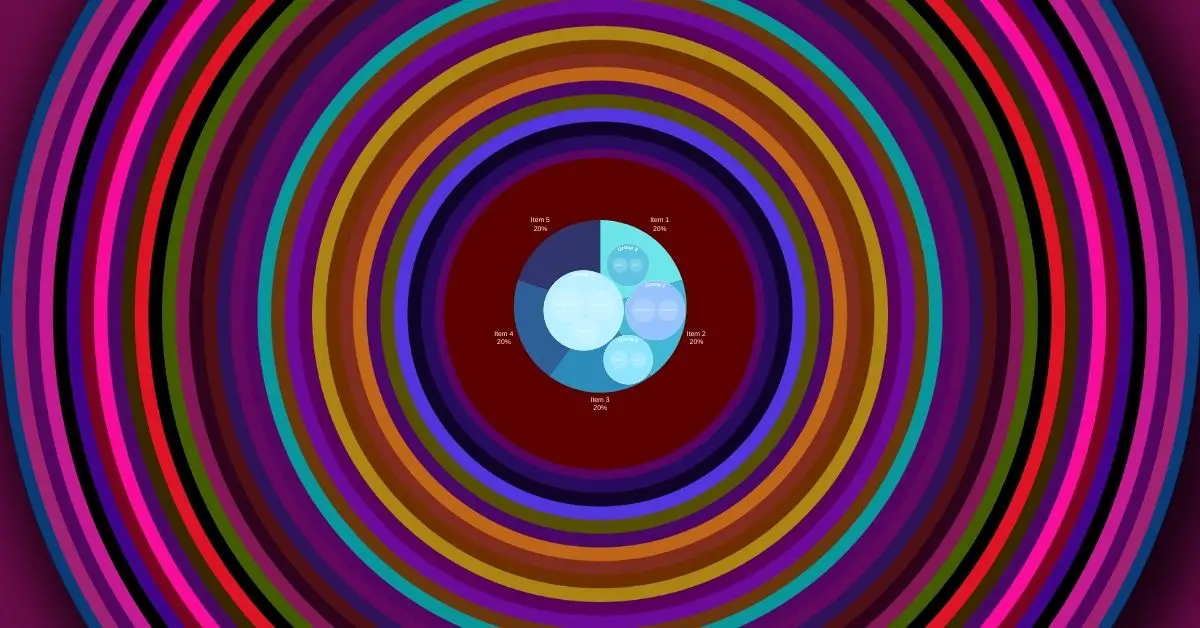|
Getting your Trinity Audio player ready... |
CSS mask animation is a powerful way to enhance the visual appeal of web pages. It allows developers to create intricate animations and effects that improve user experience and add a touch of creativity to web pages. In this guide, we’ll dive deep into the world of CSS mask animations, exploring everything from the basics to advanced techniques. Whether you’re a seasoned developer or starting this comprehensive guide will help you master CSS mask animations.
Importance of CSS Mask Animation in Web Development
Creating visually appealing and interactive web pages is crucial in today’s competitive digital world. CSS mask animations can significantly enhance the user experience by adding subtle yet impactful animations. They can be used for hover effects, loading animations, and more, making websites more engaging and memorable.
Understanding CSS Masks
Definition and Purpose
A CSS mask is a graphical overlay that controls the visibility of an element. It specifies which parts of the component should be visible and which should be hidden. This is achieved using an image or a gradient as the mask.
CSS Mask Div with Another Div- Complete Guide
How Masks Work in CSS
Masks work by applying an image or a gradient to an element. The mask image or gradient defines the transparency of different parts of the element, allowing you to create complex visual effects. When the mask is animated, the visibility of the element changes dynamically, resulting in a smooth and engaging animation.
Ultimate CSS Gradient Color Generator
Basics of CSS Mask Animation
Key Concepts
Before diving into the code, it’s essential to understand some key concepts related to CSS mask animations:
- Mask Image: The image or gradient used to define the mask.
- Mask Mode: Specifies how the mask image should be applied (e.g., alpha, luminance).
- Mask Position: Determines the position of the mask image.
- Mask Size: Specifies the size of the mask image.
Basic Syntax
Here’s a basic example of how to apply a mask to an element using CSS:
.element {
mask-image: url('mask.png');
mask-mode: alpha;
mask-position: center;
mask-size: cover;
}This code snippet applies a mask image to an element, using the alpha channel to determine transparency.
Creating Simple Mask Animations

Step-by-Step Guide
Let’s create a simple mask animation where an element is revealed from left to right. Here’s the step-by-step process:
- Create the HTML Structure:
<div class="container">
<div class="masked-element">Hello, World!</div>
</div>- Apply Basic Styles:
.container {
width: 100%;
height: 100vh;
display: flex;
justify-content: center;
align-items: center;
background-color: #f0f0f0;
}
.masked-element {
font-size: 2em;
padding: 20px;
background-color: #333;
color: #fff;
}- Add the Mask Animation:
@keyframes reveal {
from {
mask-image: linear-gradient(to right, transparent 0%, black 50%, transparent 100%);
}
to {
mask-image: linear-gradient(to right, transparent 0%, black 100%, transparent 100%);
}
}
.masked-element {
animation: reveal 3s ease-in-out infinite;
}This code creates a simple animation where the text is revealed from left to right using a linear gradient as the mask.
Advanced Mask Animation Techniques
Combining Masks with Other CSS Properties
You can combine masks with other CSS properties like transforms, transitions, and keyframe animations to create more complex effects. For instance, you can rotate, scale, or move an element while animating its mask.
Keyframe Animations
Using keyframe animations, you can create more intricate mask animations. Here’s an example of a keyframe animation that changes the mask shape over time:
@keyframes complex-reveal {
0% {
mask-image: radial-gradient(circle, black 10%, transparent 20%);
}
50% {
mask-image: radial-gradient(circle, black 30%, transparent 40%);
}
100% {
mask-image: radial-gradient(circle, black 50%, transparent 60%);
}
}
.masked-element {
animation: complex-reveal 5s infinite;
}This animation changes the mask from a small circle to a larger one, creating a pulsating effect.
Practical Examples of CSS Mask Animations
Hover Effects
You can use mask animations to create engaging hover effects. For example, you can reveal an image or text when the user hovers over an element:
.element:hover {
animation: reveal-on-hover 0.5s forwards;
}
@keyframes reveal-on-hover {
from {
mask-image: linear-gradient(to right, transparent 0%, black 50%, transparent 100%);
}
to {
mask-image: linear-gradient(to right, transparent 0%, black 100%, transparent 100%);
}
}Loading Animations
CSS mask animations are perfect for creating visually appealing loading animations. By animating a mask, you can create a unique loading spinner or progress bar:
.loader {
width: 50px;
height: 50px;
background-color: #333;
mask-image: radial-gradient(circle, transparent 30%, black 50%, transparent 70%);
animation: spin 1s linear infinite;
}
@keyframes spin {
from {
transform: rotate(0deg);
}
to {
transform: rotate(360deg);
}
}Image Reveals
Mask animations can be used to create stunning image reveal effects, making images appear gradually or in an interesting pattern:
.image-container {
width: 300px;
height: 200px;
background-image: url('image.jpg');
mask-image: linear-gradient(to bottom, transparent 0%, black 50%, transparent 100%);
animation: image-reveal 2s forwards;
}
@keyframes image-reveal {
from {
mask-position: top;
}
to {
mask-position: bottom;
}
}CSS Multiple Animations Complete Guide
Optimizing Performance
Best Practices
To ensure your CSS mask animations perform well, follow these best practices:
- Minimize the Use of Heavy Images: Use lightweight images for masks to reduce load times.
- Optimize Animations: Use hardware-accelerated properties like transform and opacity.
- Avoid Complex Calculations: Keep animations simple to reduce CPU usage.
Common Pitfalls
Be aware of common pitfalls when using CSS mask animations:
- Browser Support: Not all browsers support CSS masks, so test your animations thoroughly.
- Performance Issues: Complex animations can impact performance, especially on mobile devices.
Browser Compatibility
Ensuring Cross-Browser Support
CSS masks are not universally supported across all browsers. Ensure cross-browser compatibility by using vendor prefixes and testing your animations on different platforms:
.element {
-webkit-mask-image: url('mask.png');
mask-image: url('mask.png');
}Polyfills and Workarounds
If you need to support older browsers, consider using polyfills or alternative techniques. JavaScript libraries can sometimes provide similar functionality.
Tools and Resources
Online Tools for Testing and Creating Animations
Several online tools can help you create and test CSS mask animations:
- CodePen: A great platform for experimenting with CSS animations. Website
- CSS-Tricks: Offers tutorials and examples on CSS masks and animations. website
Learning Resources
To further your understanding of CSS mask animations, explore these resources:
- MDN Web Docs: Comprehensive documentation on CSS properties and animations. Website
- CSS-Tricks: Articles and tutorials on advanced CSS techniques.
Conclusion
CSS mask animation is a versatile and powerful tool that can enhance the visual appeal and interactivity of your web pages. By understanding the basics and experimenting with advanced techniques, you can create stunning animations that captivate your audience. Keep exploring and pushing the boundaries of what’s possible with CSS mask animations.
FAQs
1. What is the difference between a CSS mask and a CSS clip-path?
CSS masks control the visibility of an element using an image or gradient, whereas clip-path defines a clipping region that determines which parts of the element are visible.
2. Can CSS masks be animated with JavaScript?
Yes, CSS masks can be animated with JavaScript by manipulating the CSS properties or keyframes through JavaScript code.
3. How do CSS masks affect accessibility?
CSS masks can impact accessibility if used inappropriately. Ensure that essential content remains accessible and consider providing alternative text or descriptions for masked elements.
4. Are CSS masks supported on mobile browsers?
CSS masks are supported on most modern mobile browsers, but it’s essential to test your animations across different devices to ensure compatibility.
5. What are some common issues with CSS mask animations and how can they be resolved?
Common issues include performance slowdowns and lack of browser support. Optimize your animations, use lightweight mask images, and provide fallback solutions for unsupported browsers.
Arsalan Malik is a passionate Software Engineer and the Founder of Makemychance.com. A proud CDAC-qualified developer, Arsalan specializes in full-stack web development, with expertise in technologies like Node.js, PHP, WordPress, React, and modern CSS frameworks.
He actively shares his knowledge and insights with the developer community on platforms like Dev.to and engages with professionals worldwide through LinkedIn.
Arsalan believes in building real-world projects that not only solve problems but also educate and empower users. His mission is to make technology simple, accessible, and impactful for everyone.



